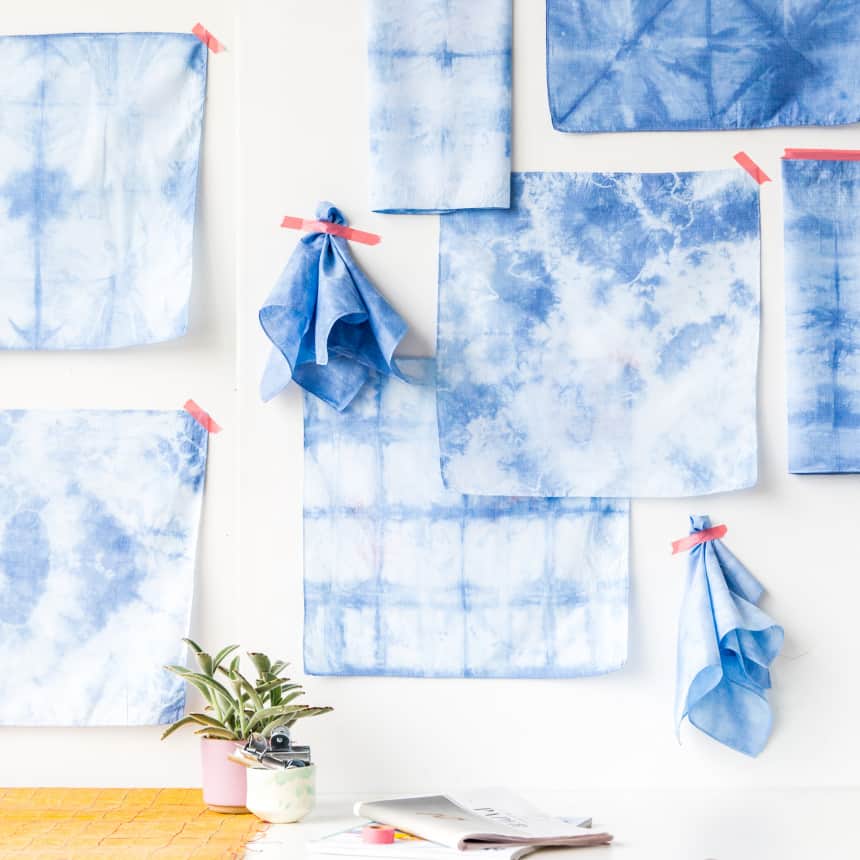Shibori Hankies
Paper & Stitch, a DIY and design blog, featured beautifully dyed hankies using Rit. We had to share the results as we love how they turned out. Not only can dyed hankies make great gifts, they can also be displayed in your home as wall art.
Supplies
- Plain White Hankies
- Rit DyeMore Liquid Dye: Sapphire Blue or Your Favorite Color
- Small Square Wood Pieces
- Rubber Bands and/or Metal Clips
- Large Plastic Container
- Measuring Cup
- Salt
- Plastic Gloves
- Plastic Table Cover
- Paper Towels
Time
1 Hour Total: {{ partial.tT57.total }}
Difficulty
Beginner Total: {{ partial.t5JH.total }}
Instructions
- Cover work area with plastic table cover and have paper towels handy to protect against any possible spills. Gather supplies.
- Before dyeing, remove any visible stains on the hankies. This will help achieve uniform color results when dyeing. Prewash item in warm, soapy water. This helps to remove any finishes that may interfere with dye absorption.
- First, submerge the hankies in water. Then, wring out the excess water and fold each hankie into a different design.
- To create a traditional Itajime Shibori pattern, accordion fold or “fan fold” the fabric in 4 ½” wide folds down the length of the fabric. This will form a long rectangle. For more pattern variations, vary the size and width of the folds.
- Accordion fold or “fan fold” the long rectangle into a 4 ½” fabric square.
- Sandwich the fabric square between the 4” blocks of wood.
- Secure “sandwich” with rubber bands to tightly hold the fabric square together.
- If you don’t want to use the shibori method, you can fold them up into squares, triangles, rectangles, scrunched up balls, etc. Have fun with it.
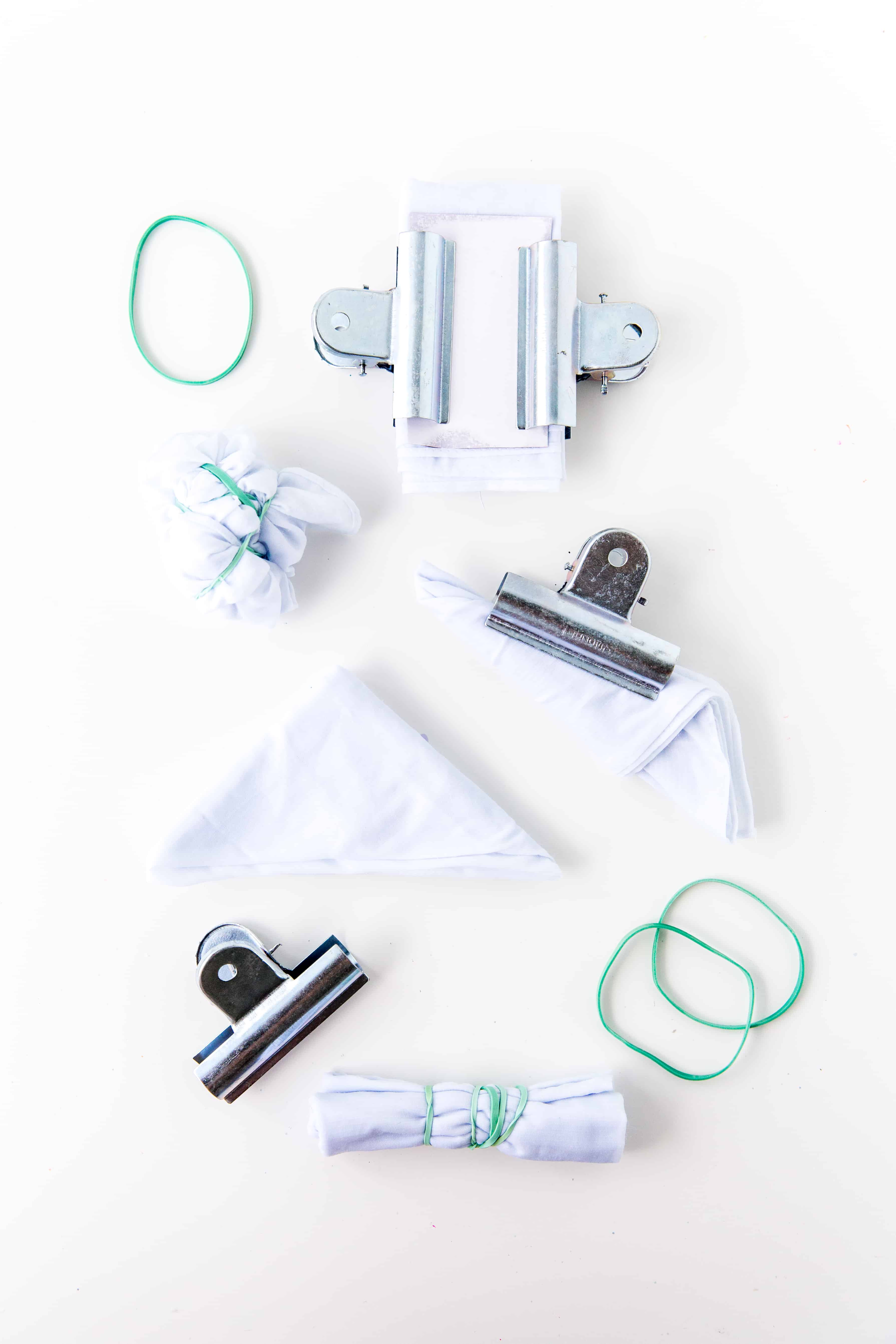
- Fill a plastic container or stainless steel sink with three gallons of hot water. The water should ideally be 140ºF. If tap water is not hot enough, heat water on the stove and add to the dyebath.
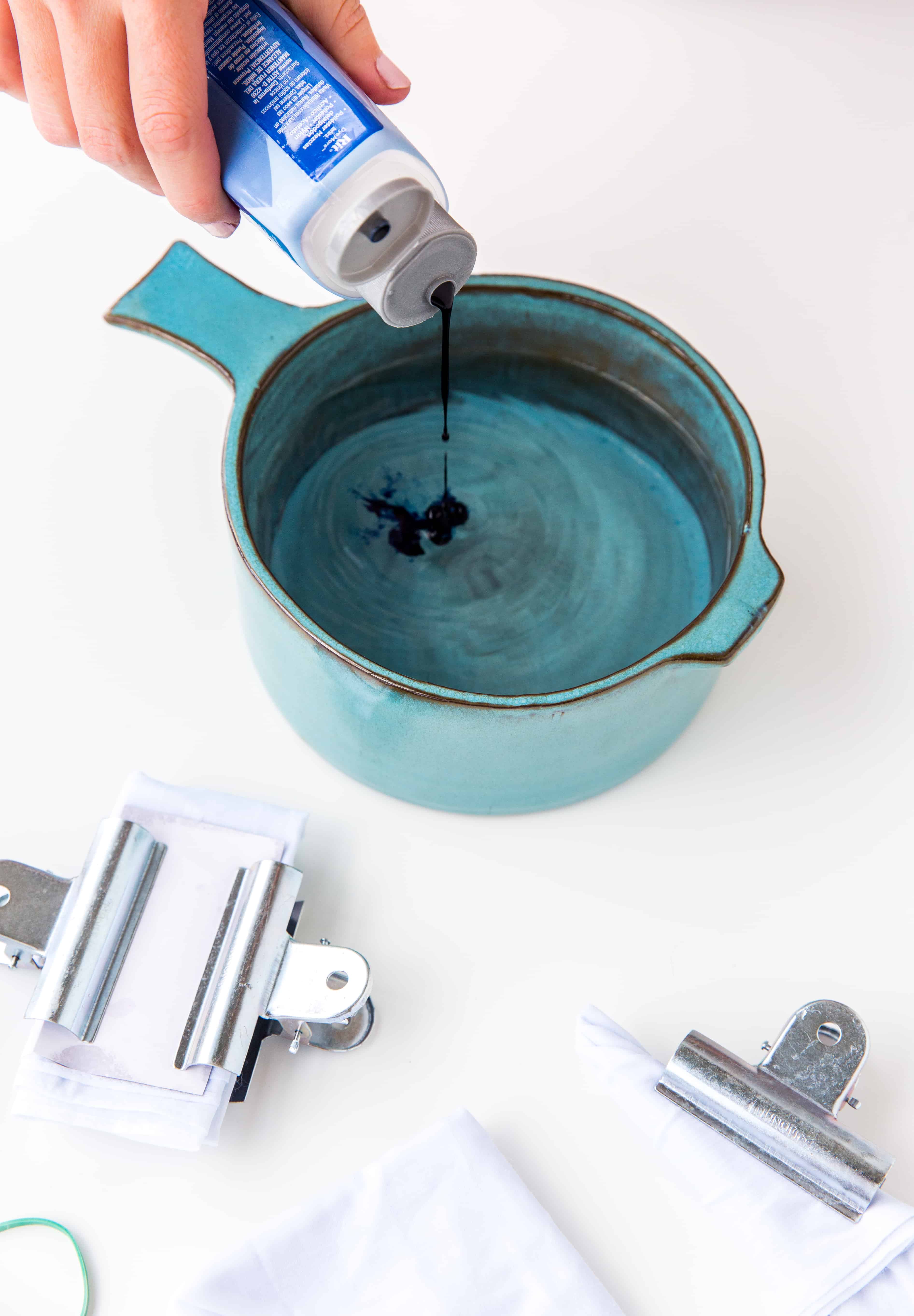
- To enhance the color: (1) add one cup of salt when dyeing fabrics containing cotton, rayon, ramie or linen; (2) add one cup of vinegar when dyeing fabrics containing nylon, silk or wool.
- Add 1 teaspoon of dish detergent to help promote level dyeing.
- As a general guideline, one liquid bottle or two powder packages dyes up to two pounds of dry fabric.
- Wearing rubber gloves, add well-shaken dye or powder package(s) to dyebath.
- Stir the dye bath thoroughly with a spoon or something similar.
- Add hankies to the dyebath. For a high contrast pattern on the shibori hankies, keep the sandwich in the dyebath for about 3 to 5 minutes to keep the wrapped part dye-free. For more color and less white areas, let the wrapped fabric set in the dyebath for 10 to 20 minutes.
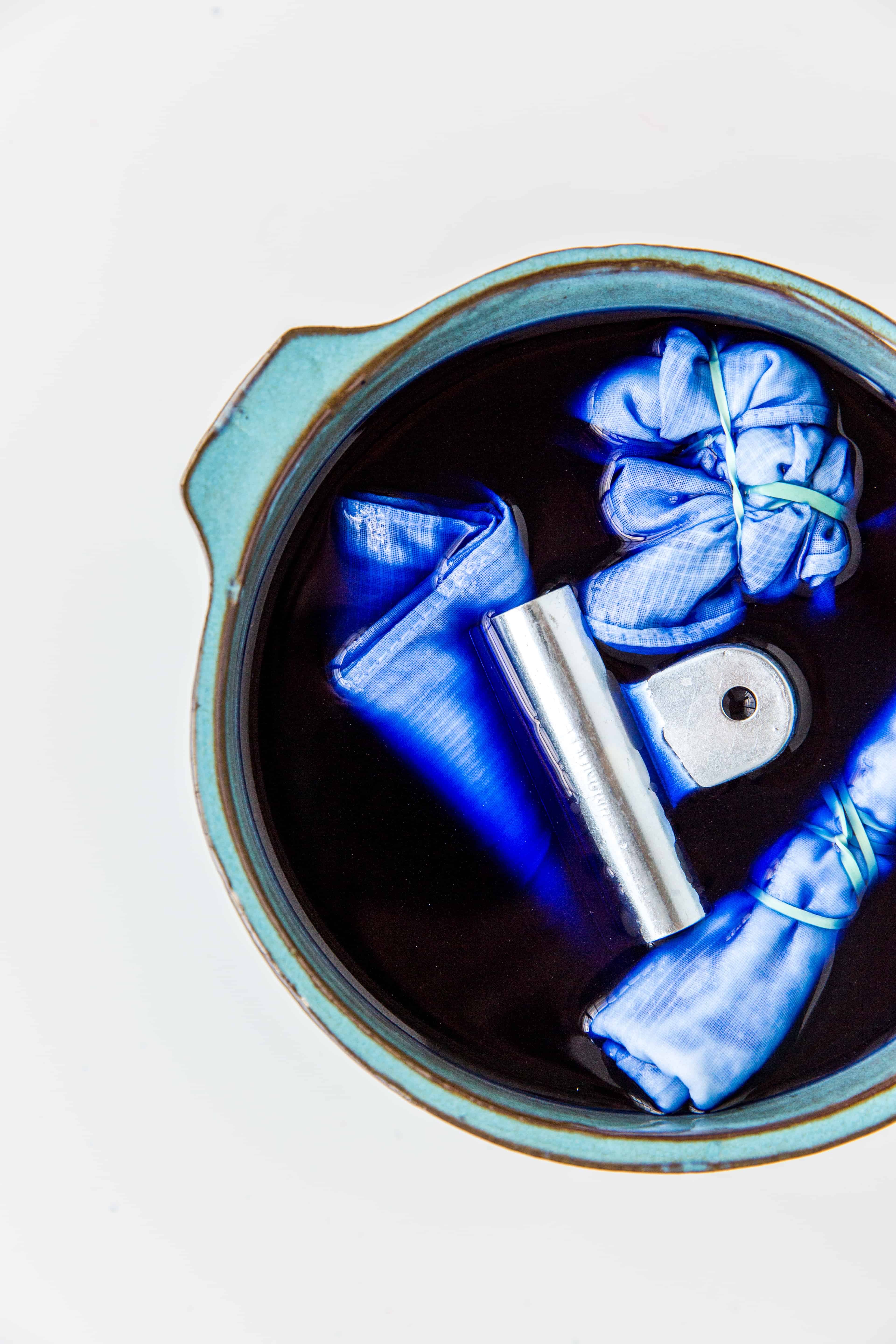
- When desired color is achieved, remove wrapped fabric from the dyebath. Do not remove rubber bands, metal clips or wood blocks.
- Rinse in cool water until rinse water begins to run clear.
- Carefully remove rubber bands, metal clips and wood blocks. Unfold the fabric.
- Wash in warm water with a mild detergent, rinse and dry.
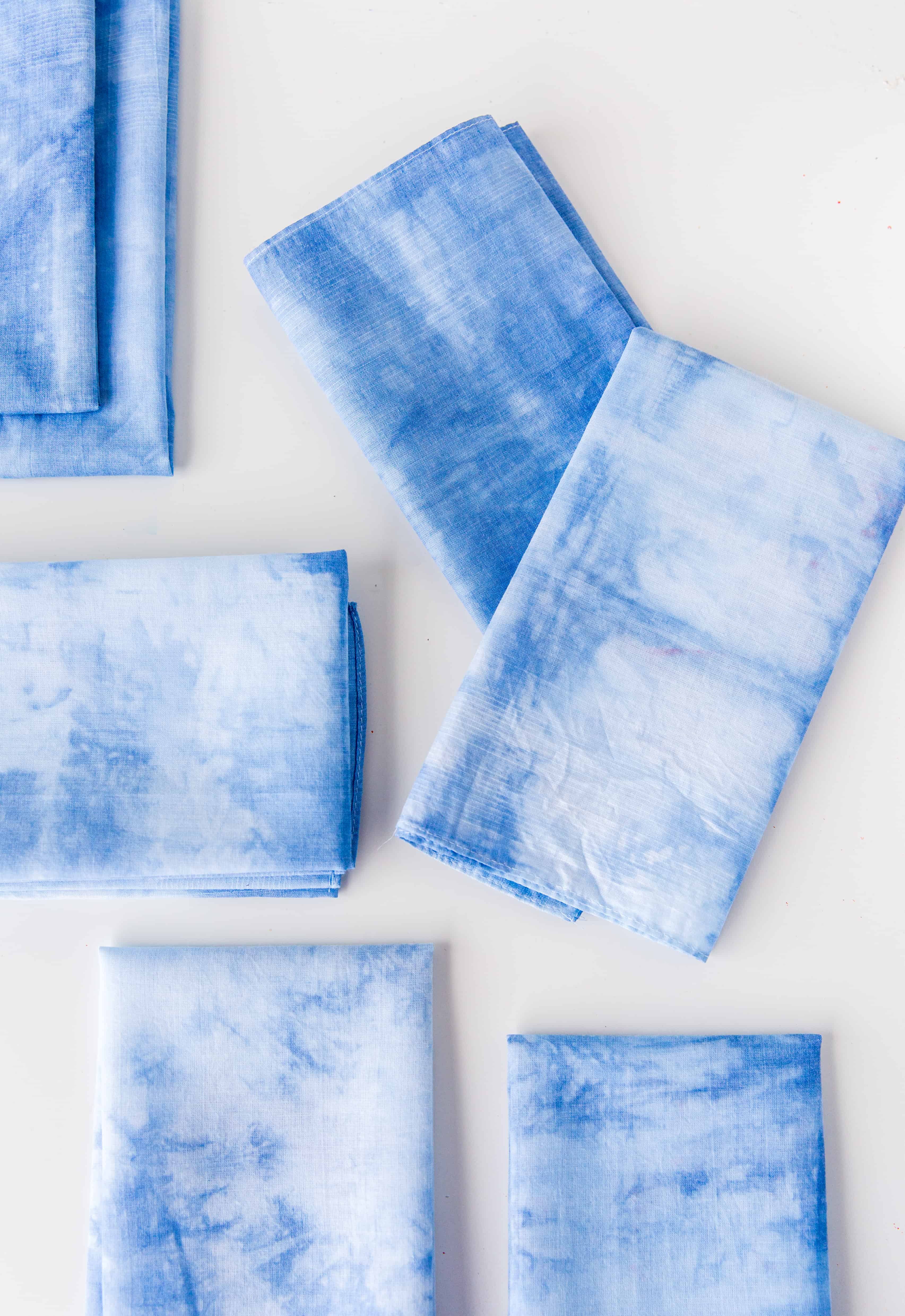
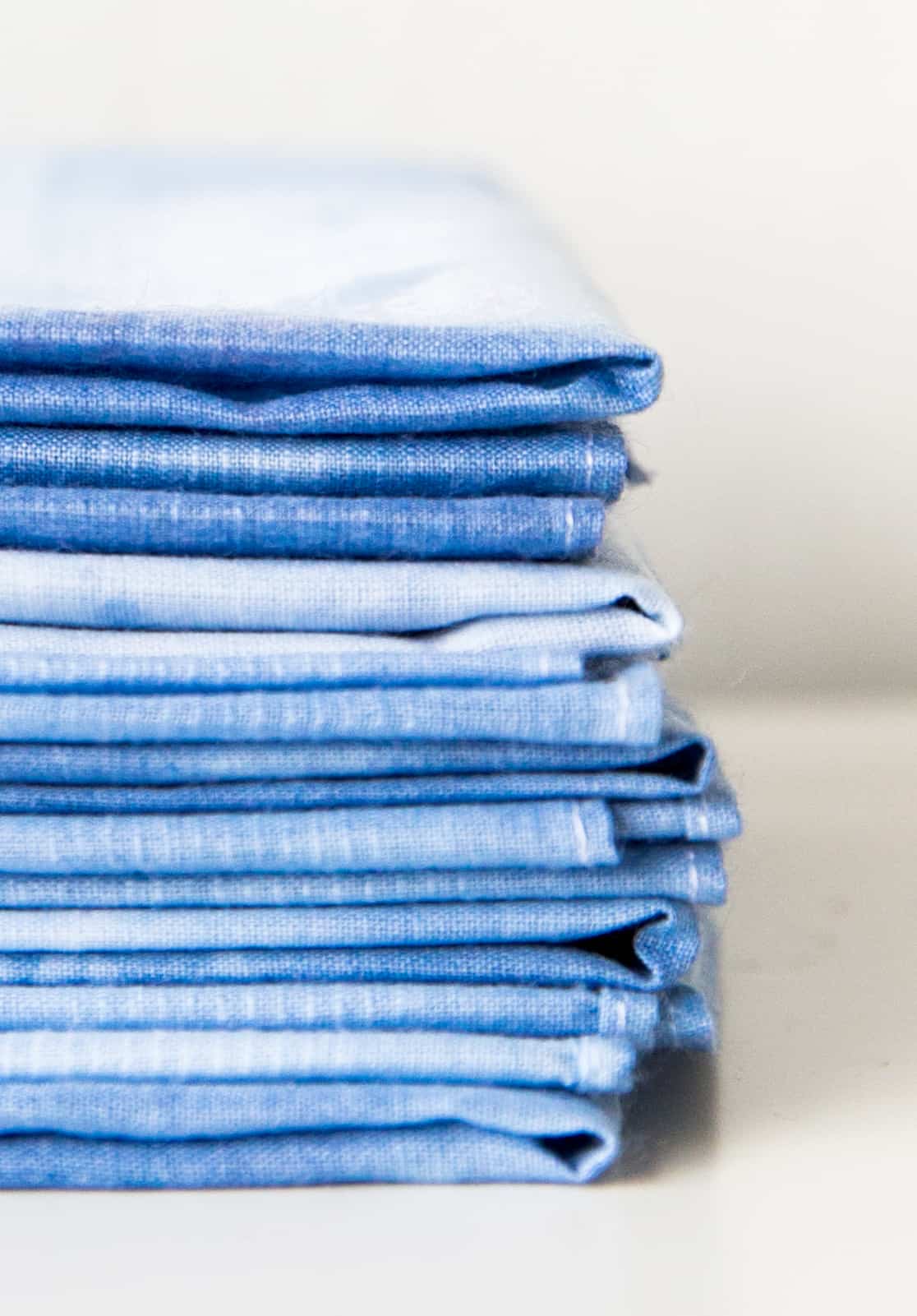
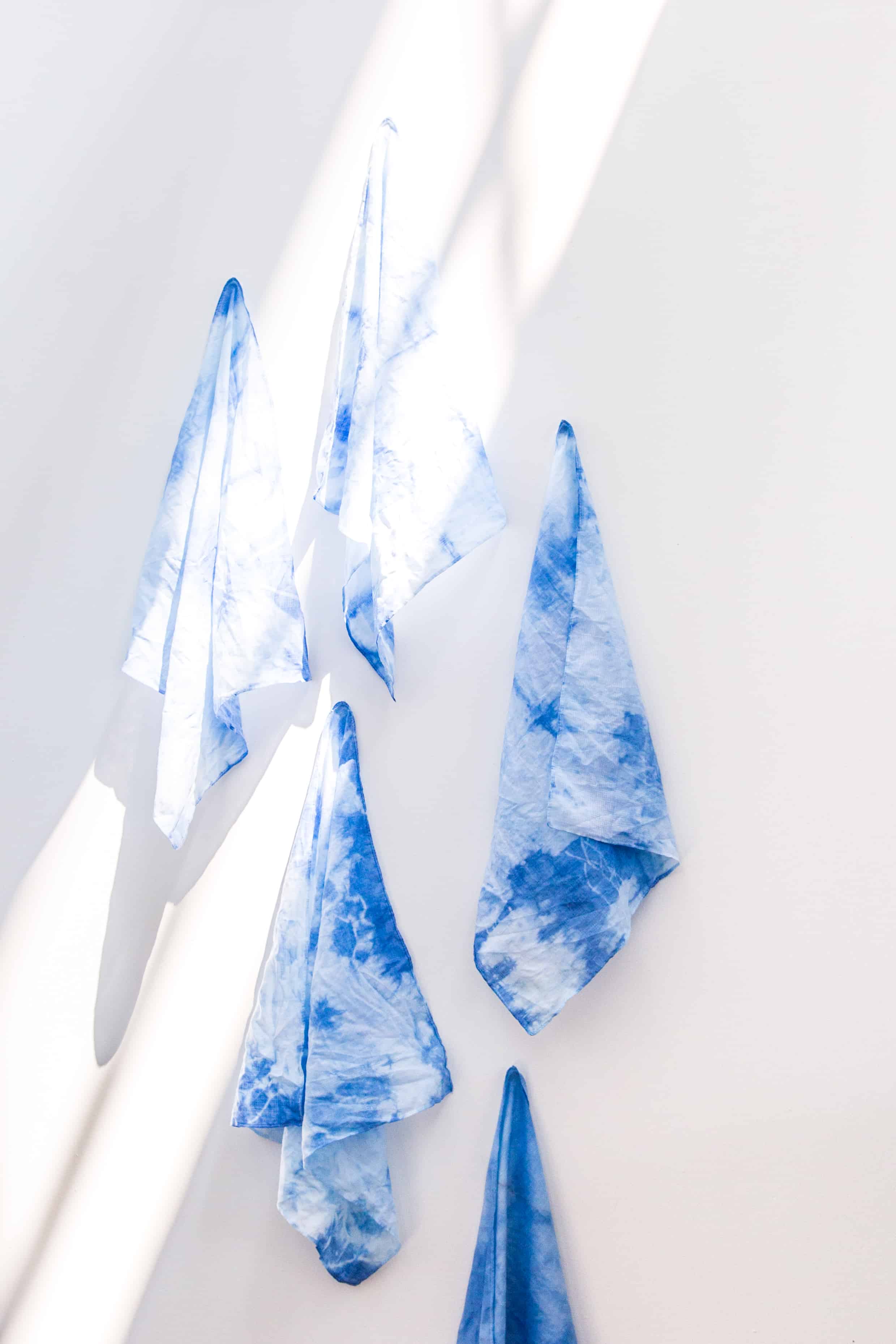
Posts You May Like
